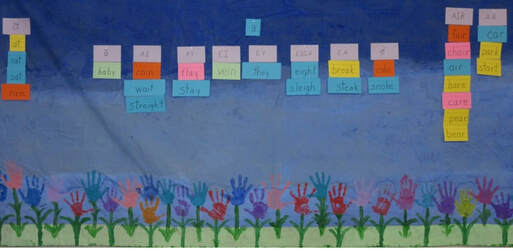The answer is no. If the child picks up reading on her own (and some children do), then that’s fine, but absolutely no child should be pushed to read at four years of age. If your preschool is trying to teach children to read at four years of age, tell them they are doing it the wrong way.
Four-year-olds should be learning the alphabet, both the capital letters and the lowercase letters. I frequently see third graders who do not know or recognize lowercase alphabet letters; therefore, we obviously need to spend more time teaching the alphabet. It’s like building a house: you can’t start with the roof. You have to build the foundation first, and if you do not build a solid foundation your house will fall down. If you do not build a solid foundation in reading, the child will always have trouble.
We assume that because a child has been shown both capital and lowercase letters that they have learned them. This is not the case and this is one of the first big mistakes often made in teaching reading.
First, start with the alphabet. Teach both the capital letters and lowercase letters. Teach them separately. Then mix the capital and lowercase letters up and make sure that children can actually identify both capitals and lowercase letters. Don’t show them in order. Rearrange the letters so that the child is actually looking at the letter and actually identifying the letter, not just remembering it from the song.
Second, teach children to write the alphabet letters. Yes, I know that we do not teach handwriting anymore, but we should. Handwriting is directly linked to learning to read. Buy a manuscript writing tablet and teach your child to shape and write their letters correctly before you try to teach the child to read.
Then, after your child has mastered identifying and writing the alphabet—both capitals and lowercase, teach letter sounds. No, I did not say teach word lists or simple stories. I said teach letter sounds. Start with the consonants. Vowel clustering teaches students to recognize that the letters of the alphabet represent sounds. I devote an entire chapter on teaching consonant sounds in my new upcoming book: Why Can’t We Teach Children to Read? Oh but Wait,We Can.
When we try to teach children to read, we rush to teach words and stories before we have even laid the foundation for learning about words. Four-year-olds should learn about the alphabet. Teach the alphabet first. Then, you will have a much stronger foundation for teaching reading.
Vowel clustering teaches students to read one step at a time: (1) learn to identify the alphabet letters—both capitals and lowercase, (2) learn to write and shape the letters correctly on manuscript writing paper not sprawled across a paper without lines, and (3) learn to identify sound(s) that each letter represents. This is the kind of foundation that vowel clustering is built upon. Once the child has letter identity, letter shape, and letter sounds, then you are ready to introduce simple words, but not before. Build the foundation before you try to add on the roof.

 RSS Feed
RSS Feed
